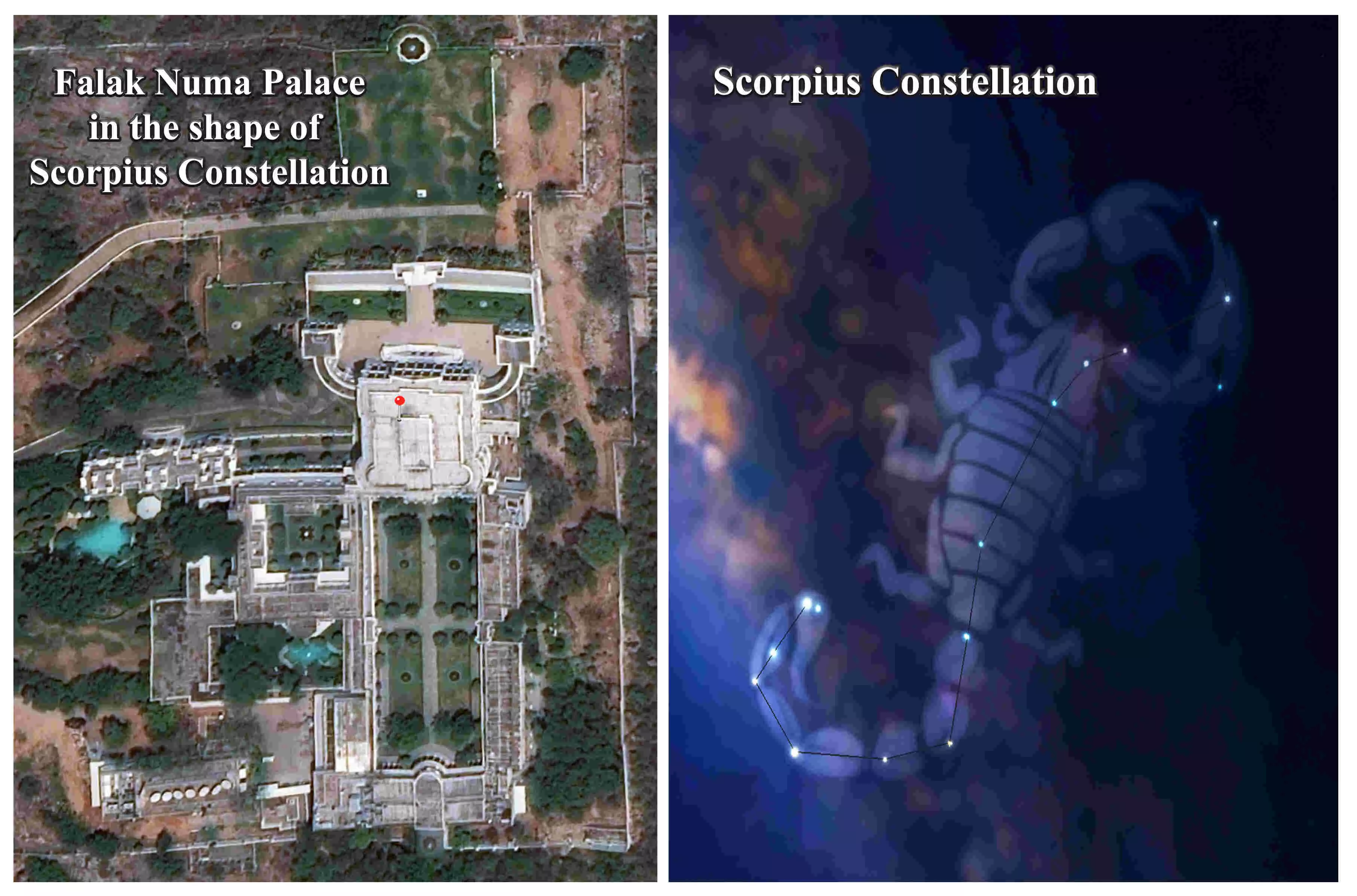Do Hyderabad's monuments have any relation with constellations?
By Mohammed Habib ur Rehman
A new study has revealed that Hyderabad was founded on an 'asterism' of three stars forming the Orion's Belt also known as 'The Three Kings'. The brightest bluish stars from East to West being Alnitak, Alnilam and Mintaka are the star names approved by the International Astronomical Union (IAU).
As a heritage enthusiast and member of the Paigah family, I have collated new facts to prove that the new city of Hyderabad was being founded on an asterism of 3 stars when looked upon from East to West on the map of Hyderabad would be Alnitak (Jama Masjid), Alnilam (Char Minar) & Mintaka (Makkah Masjid)
These 3 stars traditionally form a belt of a hunter's outfit known as Orion who was a Giant Hunter and Warrior admired in all historic ages as the most strikingly brilliant of the stellar groups,". The legend of Orion and Scorpius is that when the world was new, the great hunter Orion was feared by all the beasts. He killed many great beasts of land and sea and none escaped from his arrow.In a fit of arrogance, he proclaimed to the heavens that he would not rest until he succeeded in killing all the wild animals on Earth. His insolence angered Gaia, goddess of Earth and mother of the Titans. She sought help from the Scorpion and told it to kill Orion. The hunter however was not afraid of the creature initially.
How could one so small ever dare to challenge his might? Yet, challenged that he was, no matter how hard he tried Orion could not defeat the Scorpion. It dodged all of the arrows fired from his bow. Panicked, Orion decided to flee and that is when the Scorpion took its chance and stung Orion on the heel with its poisonous tail and killed him. Gaia, in eternal gratitude to the Scorpion, ensured that its success and Orion's shame should forever be marked for all to see and she placed them in the sky. As the stars move – it will always look as though Orion is running from Scorpion in the sky. The Scorpion rises as Orion starts to sink into the other side of the sky, and this was seen as Orion running away from the attacker and still in fear of him.
`Archaeoastronomy' is defined as an interdisciplinary study of how the people in the past understood the phenomena in the sky and used it in their cultures. As the meaning of the sky varies from culture to culture, a variety of methods are used to uncover evidence of past practices from different sources and integrate them all together for a better understanding.
It's quite surprising as to why such a study was never done regarding the history of Hyderabad from an astronomical point of view. Had it been done then 'Maybe' the 'International Council of Monuments & Sites' (ICOMOS) and the 'International Astronomical Union' (IAU) would have included Hyderabad in their list of heritage sites of archaeoastronomy that is used by UNESCO in its evaluation for such sites around the world.
It is pertinent to note that, Paigah Amir Nawab Sir Viqar-ul-Umrah Bahadur was a builder par excellence whose palaces reflect the genuine grandeur and splendour of his vision in the form of architectural masterpieces.
Educated by the finest tutors of his time, Sir Viqar very well understood the meaning of the 3 iconic monuments built by the Qutub Shahi Dynasty and their correlation with the Orion's Belt. He was well aware of the story of Orion and the Scorpion and that is why he hired the two Italian architects Oselio Bronowic and Misowalic to build the Falak Numa Palace in the shape of a Scorpion representing this celestial legend on Earth.
One of the most difficult tasks to do is to explain the 'Mythology' of ancient civilizations because it's a belief of an individual or race followed by generations. The Persian astronomers were known as 'Sitara-Shinas' and their work on astronomy was called Zij-e-Shah or Zij-e-Shahryar originally first composed for the Sassanid Emperor Khosrow I traditionally known by his epithet of 'Anushirvan ('The Immortal Soul'). The belief was that if the Sultan can understand the cosmos with the supernatural powers at work, he could control the affairs of the kingdom in the finest way.
The Qutub Shahis were Persians but in early Arabia, the word for Orion was 'Al Jauzah', a term that was used for Black Sheep with a white spot in the middle of its body. Sultan Quli's lineage emanated from the Turkoman tribe of Qara Quyunlu which also had the emblem of Black Sheep in its flag. Having said this, it may well be possible that the 3 iconic structures (Jama Masjid, Char Minar & Makkah Masjid) together also represent the emblem of the Qara Quyunlu tribe in their celestial form.
The author is Mohammed Habib ur Rehman, an heritage enthusiast and a member of the Paigah family.